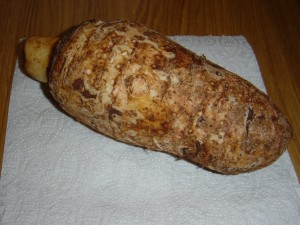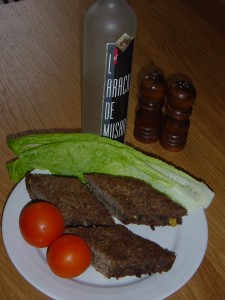The combination of fish with tahini sauce makes this dish simply delicious. It is ideal for family and works well as a party dish, but it has to be served hot. You can prepare fish and sauce in advance, keep them separate and do the mixing just before serving. It also freezes well.
Serves 2 – 3 as a main course or 5 – 6 as a starter.
Ingredients
- 2 pieces of haddock or cod or any meaty white fish (skin on) weighing roughly 300 g / 11 oz washed and pat dried on a kitchen paper
- 3 large onions thinly sliced
- 2 tbsp vegetable oil and a little more to brush the fish
- 2tbsp lemon juice
For tahini sauce / tarator
- 2 fat cloves of garlic peeled and crushed to a paste
- 85 ml /3fl oz lemon juice
- 165 ml / 5 ½ fl oz tahini paste
- 150 – 200 ml /5 – 7fl oz water
For seasoning
- Salt and freshly milled black pepper
- Cayenne pepper or Paprika
- A handful of chopped fresh parsley for garnish
- Warm Arabic or Pitta bread to serve
You also need one medium-sized baking tray and a large frying pan
Method.
Preparing tahini sauce
Add about 1 tbsp lemon juice to the crushed garlic and mix. Now, tip the tahini paste into the garlic mixture and gradually stir in alternating between water and the remainder of lemon juice. You’ll have a lumpy paste to start, but don’t worry keep stirring with the spoon until all the ingredients are thoroughly combined and the sauce has reached a creamy consistency, not too thick (similar to a single cream, see the Sauces Section). Taste and adjust if necessary.
Preparing onion – fish mixture.
- Pre-heat the oven 200 ºC / 400 ºF
- Switch the hob to a medium setting. Heat up the oil and start frying the onions stirring from time to time, making sure that they are not sticking nor burning. Reduce the setting if necessary. We are looking for very softened onions, deep golden colour but not caramelised. It should take about 30 – 35 minutes.
- Meanwhile prepare the fish. Brush generously with oil, drizzle lemon juice, then season with salt and freshly milled black pepper, wrap loosely in an oiled foil and bake in the oven for 10 minutes or more depending on how meaty the fish. Uncover the fish and bake for another 5 minutes then take it out. When it is easy to handle, flake the fish, if necessary remove bones. Keep it on the side.
- Once the onions are cooked, add the flaked fish with ½ tsp of cayenne pepper or paprika (if you prefer a milder taste). Mix gently with the onions, the idea is to avoid mincing the fish, and cook for another 3 minutes.
- Add the tahini sauce and stir gently. It should take 2-3 minutes for the mixture to bubble and it is then ready.
- Transfer to a warm large bowl or to individual ones. Sprinkle cayenne pepper or paprika and add the chopped parsley as garnish. Serve immediately with warm bread.


